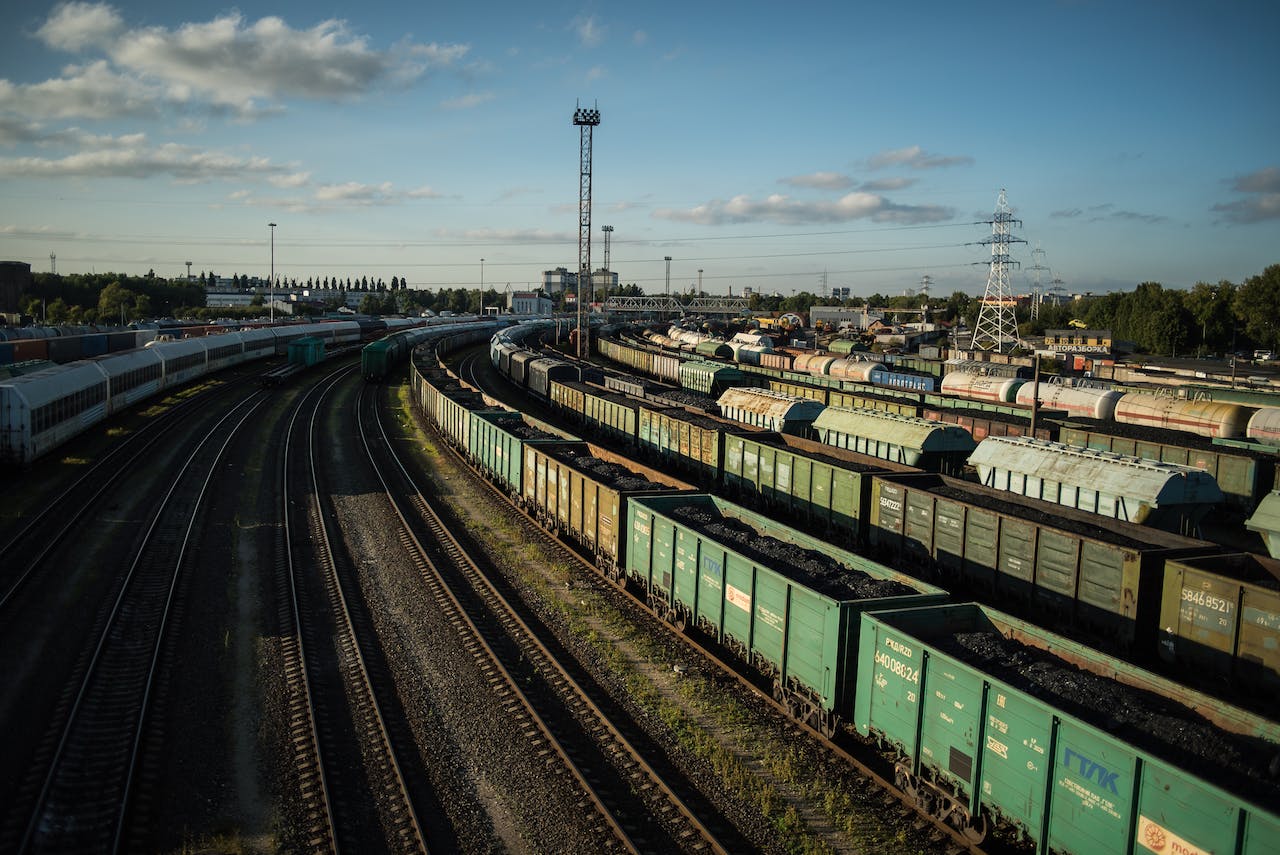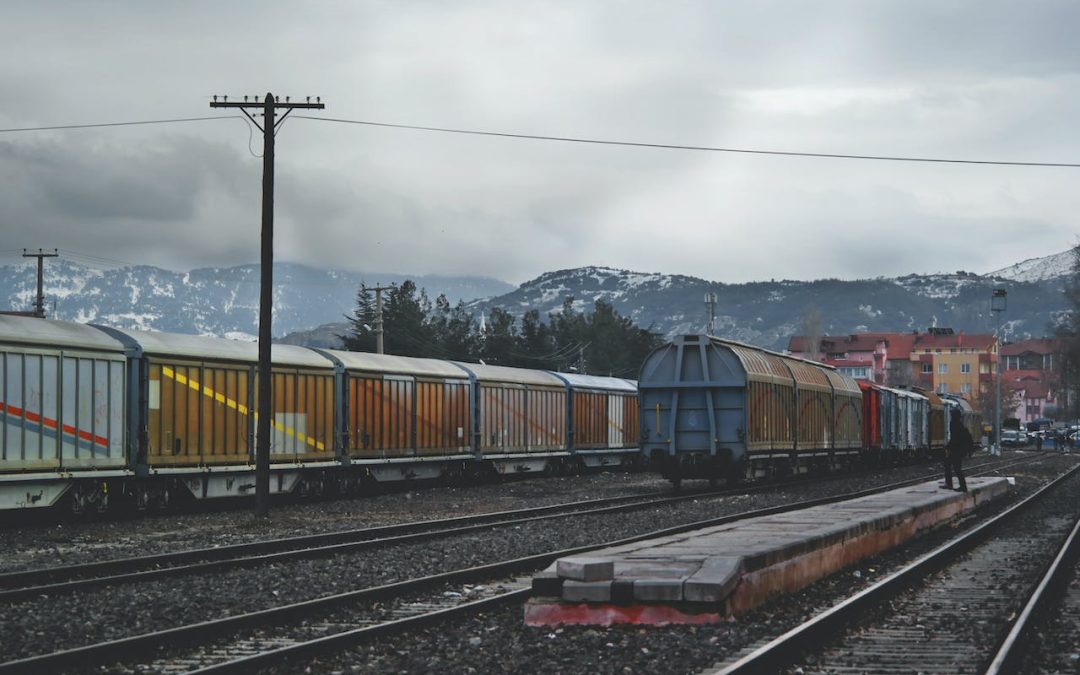For the savvy, knowing how your cargo gets from A to B can make all the difference in speed, cost, and ease.
When it comes to mode of transport, you’ve got Air, Ocean, Road or Rail to choose from. And each has its benefits and drawbacks that can impact your decision.
Here, we look at rail freight in detail so you can see if it’s the right option for your goods.
Rail Freight: An Overview
Most of us have experienced the feeling of a freight train thundering through a train station… It’s immensely powerful.
Freight trains can be up to half a mile long and use containers known as intermodal containers, as well as specialist goods wagons and rail cars, to transport shipments all over the UK. Intermodal containers can be seamlessly loaded from one mode of transport, like a train, to another, like a container vessel or truck, without unloading and reloading their contents because they are a standardised size.
Expansive rail networks UK-wide mean cargo can travel to every corner of Britain with speed and ease. Transportation of goods using trains and railroads can form all or part of the way between the shipper and the destination.
Choosing trains to move your goods is a popular choice. The rail freight industry is growing by 3% a year, with 78 million tonnes of freight recorded as having been carried on Britain’s railway in the year ending March 2022.
Rail Freight: The Pros
Here’s the rundown of the rail freight advantages.
Secure
Trains are 40% less likely to have an accident in transit than other modes of transport.
Rail freight performance is also at an all-time high thanks to investments in railway infrastructure, tracks and terminals. According to Network Rail, more than £20m has been invested in Britain’s rail freight industry.
The prevalence of GPS tracking also enables clients and customers to be given real-time knowledge of the whereabouts of their shipments, as well as preventing theft and losses and protecting the goods while they are in transit.
Fast
Rail freight is quick. Journey length depends on multiple factors, but as an example, shipments from China to the UK take between 18 and 24 days. Compare this to around 6 or 7 weeks when you opt for sea freight, and you’re onto a winner.
Well-Connected
The UK’s rail network is extensive – think the London Underground map but much, much bigger – and most of the track is managed by Network Rail.
Capacity
Freight trains can comprise as many as 100 wagons that can house goods, and over 600 freight trains are running on the UK network every single day. Can’t picture it? Most freight trains can hold the same amount of cargo as two Boeing 747s!
If you’re wondering how much a shipping container can hold, read this blog.
Greener
Transporting goods via rail uses less fuel compared to road, sea and air freight, meaning it leaves the smallest carbon footprint.
Over the same distance, rail freight uses only 5 tons of CO2 compared to over 130 tons for air freight and over 70 for an intermodal experience of air and sea. Trains are around 4 times more fuel-efficient than trucks.
Reliable
Trains don’t get affected by traffic or bad weather, meaning rail freight has extremely reliable transit times.
Cost Effective
Road and rail freight both offer similar reliability in terms of journey times, but moving goods by train can be more cost-effective for longer distances and larger loads.

Rail Freight: The Cons
Let’s run through the disadvantages of rail freight.
Limitations
Whilst the UK rail network is extensive, some places – typically those a little off the beaten track – simply do not have a robust rail network and are, therefore, not as easily accessible.
Speed
Yes, we know… How can rail freight be both fast AND slow?
Making use of the rail network to get your shipments from A to B can work out much faster than road freight for long-haul journeys, but train transport is not as fast as sending goods using a plane.
Handling
Your cargo will likely need to be taken via truck for the last leg of its journey, and it might have been moved from its point of origin to the terminal in one, too.
Rail freight is often used for intermodal shipping and, as such, tends to involve additional handling as goods are unloaded and loaded multiple times – especially because multiple consignments from different shippers can be housed in a single container. This can mean that there is more risk of breakages for fragile goods and the potential of items getting mislaid along the way.
Expense
How can rail freight be cost-effective AND expensive?
Whether rail freight works for you on your bottom line depends on the nature of your journey. Using a train to move your goods is costly for short-distance journeys (but far lighter on the wallet long-haul).
How Long Does Rail Freight Take?
Working out how long it’ll take for your cargo to get from A to B via rail freight is a difficult one because it depends on the type of cargo and where it’s going. Here are some approximations that we hope will help you gauge an idea of timescales…
- UK to China – 18-12 days
- UK to Italy – 10 days
- UK to Spain – 5-10 days
Is Rail Freight Right For You?
Rail freight, especially when combined intermodally with road transport, is fast becoming the transport of choice.
Why?
Because it’s better for the environment, far more affordable, secure and highly reliable.
Still not sure whether rail freight is the way to go for your business? Want to talk it through? Give Millennium a call. We live for conversations about cargo!

